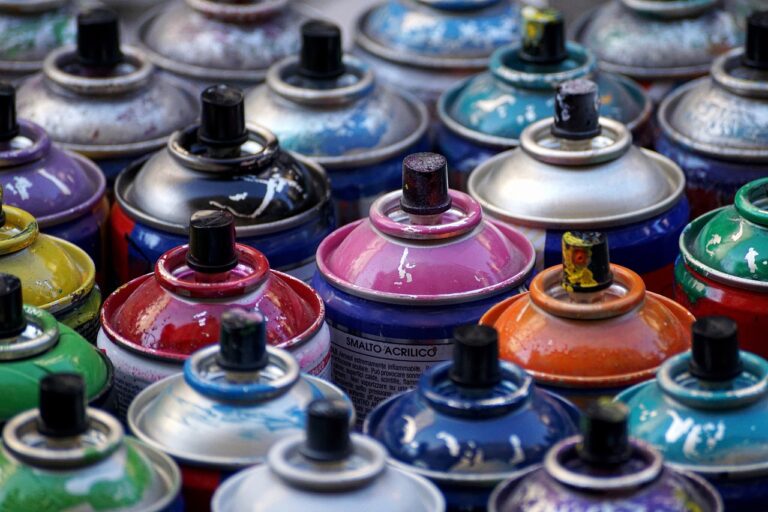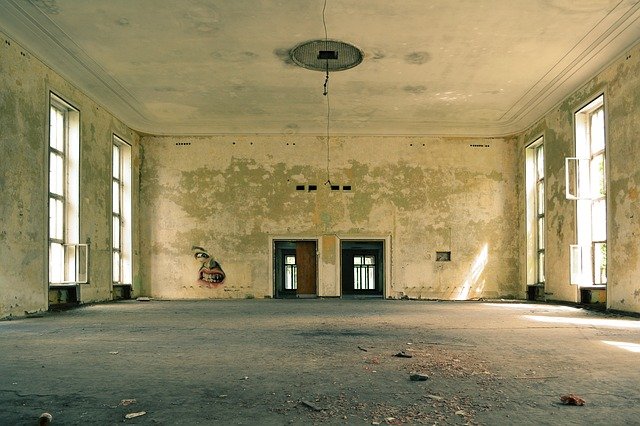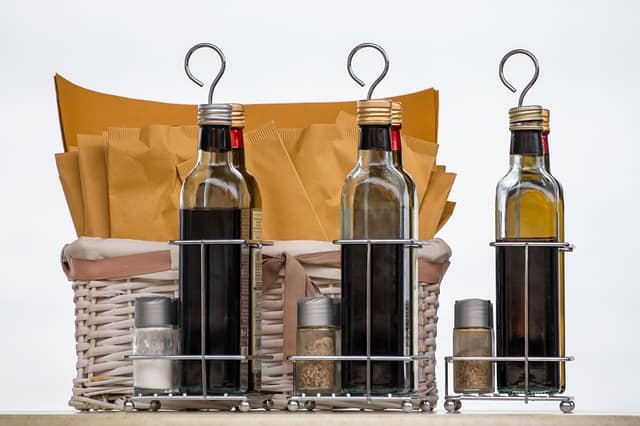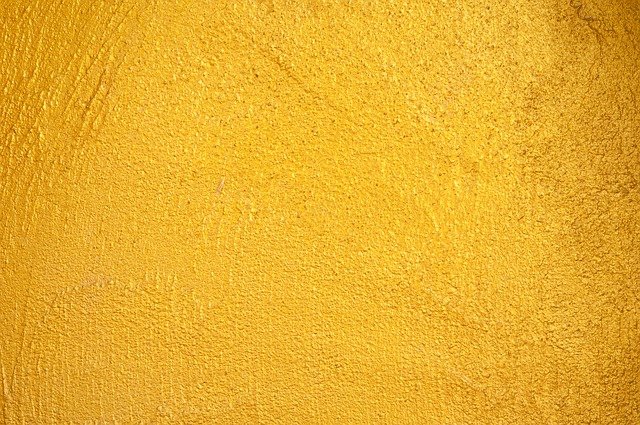How to Fix Peeling Paint on Drywall
Painting drywall may not be simple, especially if the wrong approach or paint application method is followed. The drywall material could be plasterboard, gypsum, sheetrock, wallboard, plywood reinforcement, or even a composite material. 
Your peeling paint problem will even worsen if you opt to coat the peeled section without adhering to the right procedure.
Well, in this article, we shall be discussing how to fix peeling paint on drywall. To start with, you need to select appropriate material and tools, prepare the peeled drywall sufficiently, repair/seal dents and damaged sections, and polish the drywall excellently before priming the surface, where necessary.
Further, you will be required to select paint (as per the type of the primary drywall material), prepare the paint accordingly, and carry out paint application using a paintbrush or a roller before leaving the paint layer to dry to touch as per the manufacturer’s instructions.
Avoid sanding or polishing painted drywall (it initiates peeling and destroys the finish outlook impression). Importantly, wear protective gear when fixing peeling paint on drywall for your own safety purpose. Read Also: Does Goo Gone Remove Paint?
Details: How to Fix Peeling Paint on Drywall
a. Select Appropriate Material and Tools
- Drywall Paint and Primer
- A Roller or a Paintbrush
- Patching material and putty knife
- Paint scraper and painter’s tape
- A Mop or a Rag and Clean water
- A bucket and a dust bin
- A Vacuum cleaner and a cover paper
- A sander and a Polishing machine
- Empty container – for paint preparation
- Protective gear – facemask, goggles, overalls, respirator, boots, and gloves
See Also: Airless Paint Sprayer Tips
b. Surface Preparation – old peeling paint removal
Before fixing peeling paint, surface preparation is paramount in order to achieve a high stickiness paint layer and eliminating unnecessary drains.
The surface preparation process may be broken into two major steps:
1. Sanding
- Wear protective gear ( gloves, facemask, respirator, overall, boots, and eye goggles) for personal safety
- Using a broom, sweep the drywall to remove the dust or surface debris completely. Alternatively, you can pass a vacuum cleaner over the drywall gently in order to suck dust particles
- Using a paint scraper, scratch old peeling paint entirely. You can thin the paint before scraping where necessary
- Use sandpaper (220 grit or medium grit) to sand the surface gently – helps remove remnants of peeling paint from the surface and eliminate surface unevenness
- For finer sanding process, consider using a sander, which matches the type of primary drywall material
- Use a blower to clean dust and dislodged material from the drywall surface
2. Polishing
- Plug a polishing machine (soft grade) to the power supply and run it over the sand surface in order to achieve a smooth final finish.
- When polishing, run the machine back forth as per the orientation of the drywall surface. For wood and laminated drywall, pass the polishing machine along the direction of the grains to avoid further surface damage
- Blow or sweep dust from the surface and scan to see if there is any paint remains on the surface
- Using a wet piece of cloth, mop and rinse the drywall to dryness
c. Repair/Seal the Dents and damaged section
- Using patching material, seal/repair dents and damaged sections. Fill the holes and porous sections too
- Smoothen the filled area with a putty knife and clean excess material
- Leave the surface to dry sufficiently
- Sand and polish the sealed points, and mop before leaving the drywall to dry naturally ready for the next step
When carrying out a surface repair, select the patching compound that matched the particular primary material of the drywall.
Otherwise, the adhesive contact may be low, leading to peeling or flaking with time.
See Also: Paint Roller for Textured Walls.
d. Primer and Paint Selection
When selecting the primer, consider the type of drywall material. It’s advisable to purchase universal primer (works for almost all surfaces).
Moreover, your selected primer should match with the final paint finish – oil-based paint should be primed using oil-based primer and vice versa.
Choose a primer and paint that’s fast-drying peel resistant, more comfortable to prepare and resistant to mould/mildew. The paint should either be used indoors or outdoors as per the location of the drywall.
Remember, the quantity of paint purchased is a function of the surface area under paint application.
e. Prime the Surface
Add primer into an empty bucket and thin where necessary – you need to follow manufacturer’s instructions when thinning. Alternative, carry out a drip test – a well-thinned primer should load on a paintbrush without forming many drains
- Dip the paintbrush into the primer and apply over the drywall – back and forth – until the entire surface is coated
- Leave the prime coat to dry as per the time given by the manufacturer before applying the next coat if need be
f. Actual Paint Application
Pour finish paint into an empty bucket and thin accordingly – as directed by the manufacturer
- Dip a paintbrush into the paint solvent and apply over the primed drywall. Alternatively, use a roller, especially for a flat, wide drywall surface.
- Using a paintbrush (while on a ladder), cut corners and eliminate runs and streaks that may from when using roller before they dry out
- Leave the surface to dry before applying a second coat where necessary
g. Final Finish
To attain a smooth final finish, a soft bristle paintbrush should be used when terminating edges and lining paint finish coat.
Covering the painted surface (for oil-based paint) or sprinkling some water on the surface should be done to keep off the dust from settling due to electrostatic charges attraction.
Importantly, never polish or sand drywall after painting (when correcting runs/drains) as this act may destroy the impressive outlook impression. See Also: Paint a Deck with Peeling Paint.
What Causes Paint to Peel on Drywall?
The following are some of the factors/conditions that cause the paint to peel on drywall:
1. Age
Upon application, the paint begins to age with time. The chemical structural formula is highly affected by extreme weather conditions, which weaken the molecular bonds.
Further, the paint begins to disintegrate (breaks) and loses adhesive ability over the primary surface material, thus leading to flaking or peeling.
On the other hand, applying old paint (expired paint) on the drywall leads to peeling, chipping, or scuffing due to low stickiness ability.
2. Excess Heat
Presence of high heat or direct sun radiations weakens the paint adhesive bond leading to peeling or flaking.
In addition, the UV-rays damage the paint chemical formulation, thus accelerating the ageing process – reduces paint coat service life.
Excess heat in enclosed drywall (interior) leads to continuous underneath accumulation (settles between the drywall and paint layer) leading to peeling action.
Interior drywall should have sufficient air conditioning system. See Also: Deck Stain Sprayer.
3. Humidity
High humidity level over the paint layer initiates peeling by allowing continuous moisture accumulation beneath the painted wall, thus weakening the stickiness ability.
Continuous wetness over the paint layer leads to weakening of paint molecules and reduction stickiness action over the drywall.
NB: Interior drywalls with high humidity content should be fitted with a dehumidifier to boost paint service life.
4. Poor Surface Preparation
Primer or paint that is insufficiently prepared causes peeling to occur on drywall with time.
This occurrence may result due to low paint stickiness action or incomplete activation of active ingredients within the solvent upon paint application.
A highly viscous paint (under diluted) sticks fairly over the drywall – it ends up peeling after a couple of days.
Moreover, thin paint forms too many drains on the surface when painting, which leads to peeling or chipping occurrence.
NB: Always follow the manufacturer’s instructions during paint preparation or subcontract a painting professional to help you.
5. Too many Paint Layers
Applying too many paint layers creates internal stress at the bottom coat, thus leading to the onset of peeling action.
Usually, the surface strain on each paint layer is concentrated to the bottom paint coat (one holding on the drywall), which eventually loses the adhesive strength with time.
Furthermore, coating old peeling painting without surface preparation will only stay a few days before the entire paint layers peel again.
It’s, therefore advisable that you consider applying a minimum paint layer (one or two) in order to avoid chipping, peeling, or scuffing problems. See Also: Paint Sprayer for Exterior Walls
How to Prevent Paint Peeling On DryWall
To enjoy longer service life upon paint application, you need to maintain your drywall properly and consider using these preventive measures:
- Clean your drywall often with a moist piece of cloth to remove dust and surface debris – they cause paint coat weakness and initiate chipping and peeling action.
- Never apply too many coats on the drywall or coat old paint before surface preparation.
- High humid areas should be fitted with a dehumidifier in order to boost the drywall’s service life.
- Wet (painted) drywall should be mopped and rinsed effectively to prevent paint coat damage.
- For the exterior drywall painting process, consider coating the finish layer with a UV-ray protective lamina.
- Correct drains and runs formed when painted before they dry out and avoid scratching dried paint.
- Do not wet drywalls painted with water-based paint – water thins the paint layer, thus leading to section peeling or chipping?
- Aerosol chemicals shouldn’t be sprayed over drywall coated with oil-based paint – lead to chemical reaction and surface disintegration.
Precautions for Fixing Peeling Paint on Drywall
When fixing peeling paint on drywall, it’s advisable to follow the following precautions and safety measures in order to prevent injuries and other related health hazards:
- Always put on protective attire – facemask, respirator, overall, gloves, boots, and goggles.
- When sanding the drywall, avoid over pressing as it may damage the primary surface material.
- Primer selected should always match the finish paint to be used – oil-based primer should be used with oil-based paint and vice versa.
- Follow manufacturer’s instructions during paint preparation or contract a pint professional.
- Never smell paint or primer directly (with your nose) – the paint has components that may choke you when inhaled.
- Always carry out a drop test experiment before you begin to paint drywall (to ascertain stickiness level).
- In case you get contact with thinner, primer, or paint, wash the section with water and soap immediately.
- Clean the floor or working area after painting the drywall and dispose of waste material in a dustbin or a garbage pit.
- Store paint and primer that remain, away from kids/pets to prevent intoxication if swallowed.
- Avoid using old paint when fixing peeling paint. Always check the expiry date of a particular paint before breaking the seal.
See Also: Paint Sprayer Under 200
Conclusion
Having chosen to read this article on how to fix peeling paint on drywall, I believe that you not only gained painting techniques but also acquired unmatched skills that enable you to undertake DIY projects without any challenge.
Usually, paint peels on drywall due to factors such as excess heat, age, moisture, high humidity, or poor surface preparation.
Therefore, when fixing peeling paint, you need to select appropriate material and tools, prepare the peeled drywall sufficiently, repair/seal dents and damaged sections, and polish the drywall excellently before priming the surface, where necessary.
Further, you will be required to select paint (as per the type of the primary drywall material), prepare the paint accordingly, and carry out paint application using a paintbrush or a roller before leaving the paint layer to dry to touch as per the manufacturer’s instructions.




